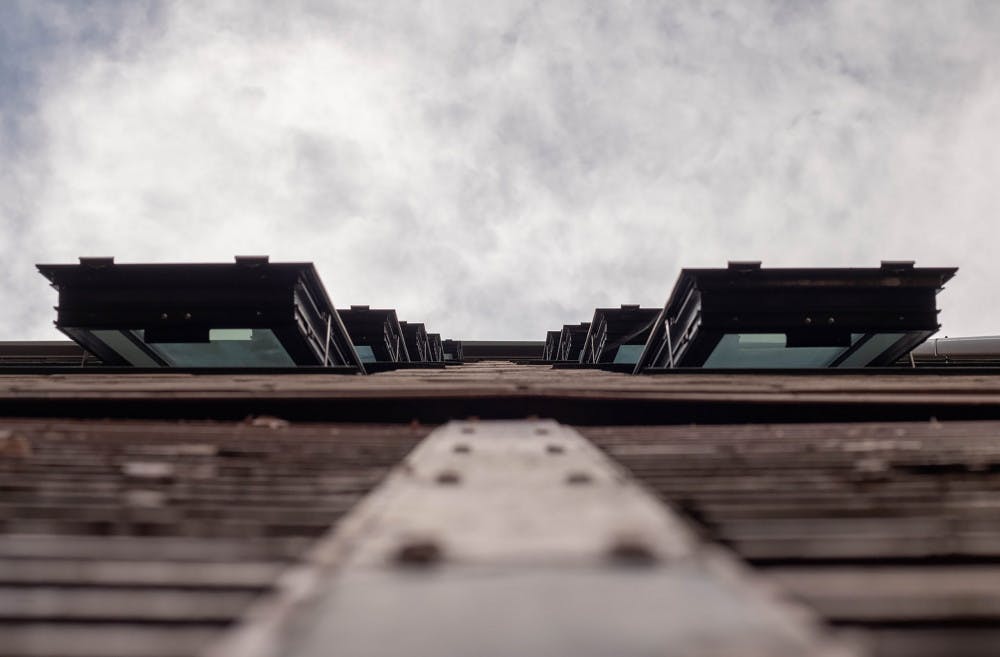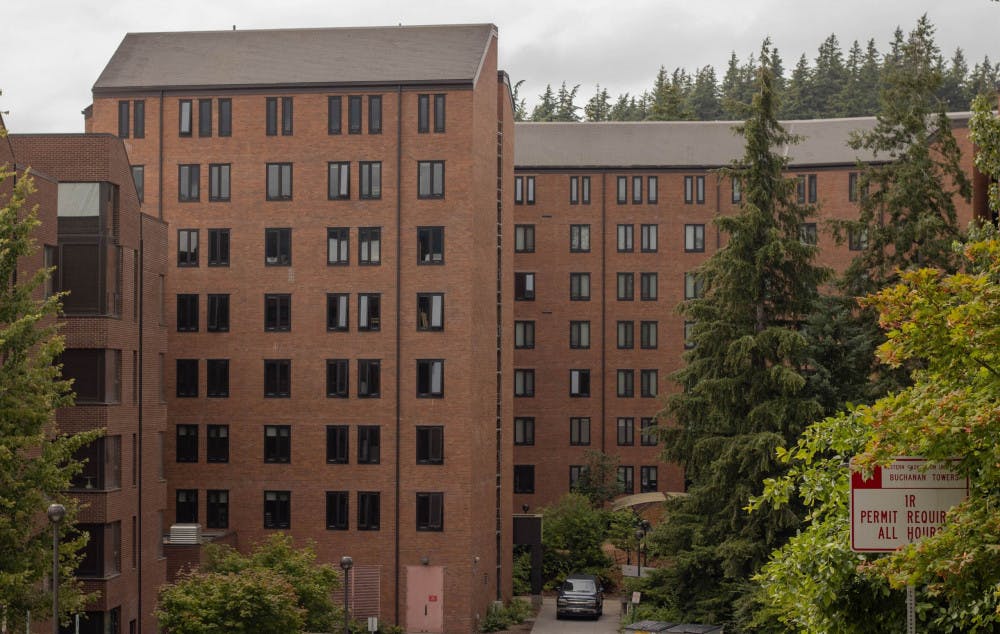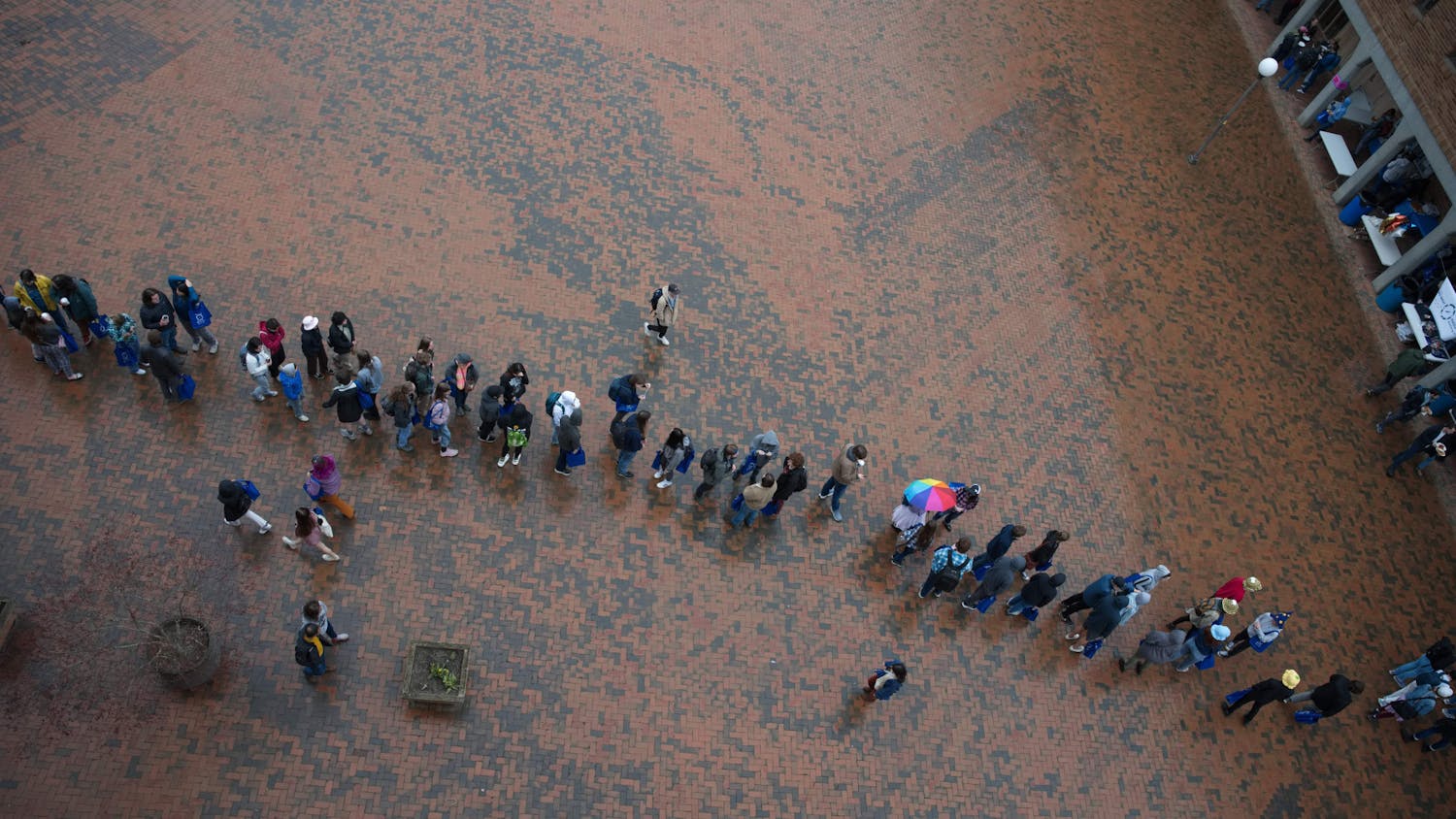
Amid the uncertainty the pandemic has brought, what is still unclear for Western students is what housing will look like in the fall.
Many students left the dorms to stay with their parents because of the extended spring break and the stay-at-home orders, said Olivia Zina, who is a former resident adviser. Those who stayed in the dorms experienced what students might expect for fall quarter.
The Western Front reached out to Christan Urica, Residence Life assistant director, and was redirected to Paul Cocke, director of the University’s Office of Communications. Cocke said in an email that “planning was still underway.”

“Only around 400 students were left in the dorms,” said Kaitlin Losansky, a former resident adviser who worked during the spring quarter. “Normally there are about 4,000 to 5,000 across campus.”
During spring quarter, the Fairhaven dining hall was takeout only and the remaining students left on campus were moved to suite-style dorms. Students all over campus were reassigned to Buchanan Towers and Birnam Wood.
“Buchanan Towers usually has, in a normal year, around 500 residents,” Losansky said. “So having 400 residents across campus total was crazy. That’s also a part of the consolidation — having so few people spread so far made safety a concern. It was better to consolidate because there were so few residents.”
The other rationale, Losansky said, is that suite-style dorms offer a more hygienic way of living, with bathrooms and kitchenettes for each suite. Bedrooms were limited to one occupant.
Jordan Sawyer, a second-year student who lived on campus during the spring quarter, felt pretty safe in the dorms. “Most people were following social distancing rules. It helped to be in those separate [bed]rooms. I think that the dorms did a really good job keeping people safe … because students were doing their best as well.”
According to Western’s fall housing website, the campus will offer single and double-occupancy rooms for fall quarter.
The safety precautions are less clear about public spaces in the dorms such as lounges, study rooms and hallways. And is it realistic to expect college students to be able to safely social distance themselves in the dorms?
Dr. Alison Cohen is a researcher at Berkley who led one of the first studies about COVID-19 related experiences of a sample of college students across the U.S.
“While college students are often seen as engaging in highly risky behavior, our study shows that many college students are taking the risks of COVID-19 seriously, and are restricting their behaviors accordingly,” Cohen said.
According to the study led by Cohen, 95% of the participants had sheltered in place or stayed primarily at home by late April 2020. Fifty-three percent of participants started sheltering in place before any state had an official stay-at-home order, and over one-third started before any metropolitan area had an order.
However, some people believe that many students do violate social distancing guidelines.
“Many students did not socially distance during the hard lockdown. Proportionally there were a significant number of parties,” said Losansky. “On the other hand, there were a lot of students who did not leave their dorm for any reason; that’s the beauty of a suite-style dorm, is that you didn’t have to.”
Most of the enforcements for social distancing during the spring quarter were “passive programming” like posters and emails, Losansky said.
That might not be enough.
“I don’t know if there’s a way to enforce social distancing in the dorms,” Sawyer said. “The best way would be to promote it in a social atmosphere.”
Moving into the dorms could also lead to a spike in cases at Western.
“Any time that people move between locations, it is possible that they could be bringing COVID-19 with them,” Cohen said. “It will be important to have diagnostic testing widely, and freely, available to all students, especially upon their returns to campus, and to have students self-isolate while awaiting the results of their diagnostic test.”
Another concern about living in the dorms is the price.
“About a week ago, a housing questionnaire was sent to everyone. They seemed more interested in seeing if we had planned on dropping out,” said incoming first-year Raynayjah Jackson. “They have told us nothing about any housing, no mention of what we will have to pay. They haven’t asked us for a housing deposit, [or] if we are solo or with roommates.”
According to Western’s fall housing website, the university will not charge more than the double room rate fall quarter, even for students who live alone. Winter and spring 2021 rates have not been announced.
“I know folks, myself included, who have no idea if they can afford this year simply because Western has not come out and said what the new dorm rates are,” Jackson said.
Setting the new dorm rates may not be as simple as one might think.
“Residence life is financially independent from the rest of the school. I think a lot of students don’t really realize it,” Losansky said. “We need residents to pay to live in the dorms or else we all don’t have jobs. That’s going to be a really delicate balance if Residence Life wants to make housing affordable but also we have to pay our employees. I myself would like to be paid.”
For now, students like Sawyer are proceeding cautiously.
One of the appeals of living in the dorms is the opportunity to meet peers and find community. The quality of that community comes into question when social distancing.
“This is a very uncertain time and I feel like people, freshmen in particular, don’t want to sacrifice their goals because of COVID,” said Losansky. “So they will find their own way of making community.”
Kate Yeoman is a third-year at Western and a reporter for The Front. Kate’s work includes campus-related news and can be reached at yeomank@wwu.edu.





